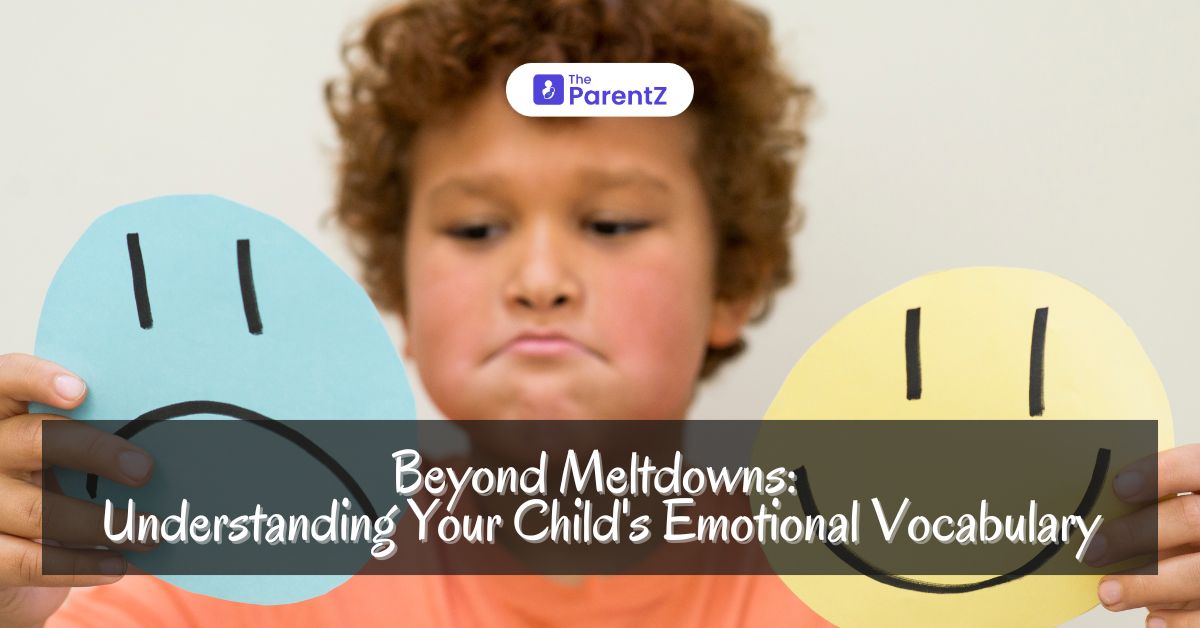Meltdowns. When we hear this word, we automatically conjure images of tear-streaked faces and ear-splitting cries. While these are certainly common expressions of a child’s overwhelming, they’re just the tip of the iceberg. Imagine a world where every emotion feels ten times bigger, and the adults who love you most might not understand the storm brewing inside. This is the reality for many children struggling to express themselves.
Here’s the good news: meltdowns are a sign your child is trying to communicate! Let’s explore the vast emotional vocabulary beyond tears, and equip ourselves to navigate those sometimes-turbulent waters.
Decoding the Nonverbal Cues
Children are often better at feeling emotions than expressing them verbally. Here are some ways to decipher their unspoken language:
- Body Language: Clenched fists, crossed arms, or a furrowed brow can all indicate frustration or anger. Conversely, a slumped posture, downcast eyes, or listlessness might signal sadness or fatigue.
- Changes in Routine: Does your child suddenly resist bedtime stories, a usually cherished ritual? This could be a sign of anxiety or fear surrounding an upcoming change.
- Play Patterns: Pay attention to how your child interacts with toys or during imaginative play. Themes of aggression or withdrawal can hint at underlying emotional struggles.
Beyond the Tears: A Spectrum of Meltdowns
Meltdowns are known to manifest in a variety of ways. Here are some less-recognized expressions:
- The Shut-Down: Some children become withdrawn, silent, and seemingly unaffected. This doesn’t mean they’re not processing the situation. It could be their way of coping with overwhelming emotions.
- The Tantrum Transformer: This child might throw themselves on the floor, kick their feet, or lash out verbally. While frustrating, it’s important to remember that this is a cry for help, not defiance.
- The Physical Response: Headaches, stomachaches, or difficulty sleeping can all be physical manifestations of emotional distress in children.
Understanding the Why
Studies show that meltdowns are rooted in a child’s inability to manage their emotions effectively. Here’s a peek into the psychology behind them:
- Limited Emotional Vocabulary: Young children are still developing the language to express complex feelings. Imagine trying to navigate a confusing situation with only a handful of words!
- Frustration with Limitations: Whether it’s wanting a toy they can’t have or struggling with a new skill, frustration can quickly escalate when a child feels their needs aren’t being met.
- Big Emotions, Little Bodies: The part of the brain responsible for emotional regulation is still under development in children. This means they have a harder time calming themselves down once upset.
Turning Tantrums into Teachable Moments
Now that we have a better understanding of meltdowns, let’s explore some practical tips:
- Validate Their Feelings: Acknowledge your child’s emotions, even if you don’t agree with their behavior. Phrases like “I see you’re feeling frustrated” or “It’s okay to feel angry” go a long way.
- Stay Calm (Even When You Want to Scream): Your child feeds off your energy. Take a deep breath and remember, you’re the anchor in their emotional storm.
- Offer Choices and Tools: Empower your child by providing age-appropriate choices, like picking a calming activity or taking a few deep breaths together.
- Focus on the Future: Once the storm has passed, use the experience as a learning opportunity. Help your child identify the emotion they were feeling and brainstorm coping mechanisms for next time.
Remember, you are constantly learning too. Don’t be afraid to seek additional support from trusted resources like pediatricians, therapists, or parenting educators.
By expanding your emotional vocabulary to include your child’s nonverbal cues and understanding the reasons behind their meltdowns, you can transform those tantrums into opportunities for growth and connection. With patience, empathy, and a little detective work, you’ll be well on your way to navigating your child’s emotional landscape and fostering a healthy, happy relationship.








Be the first one to comment on this story.